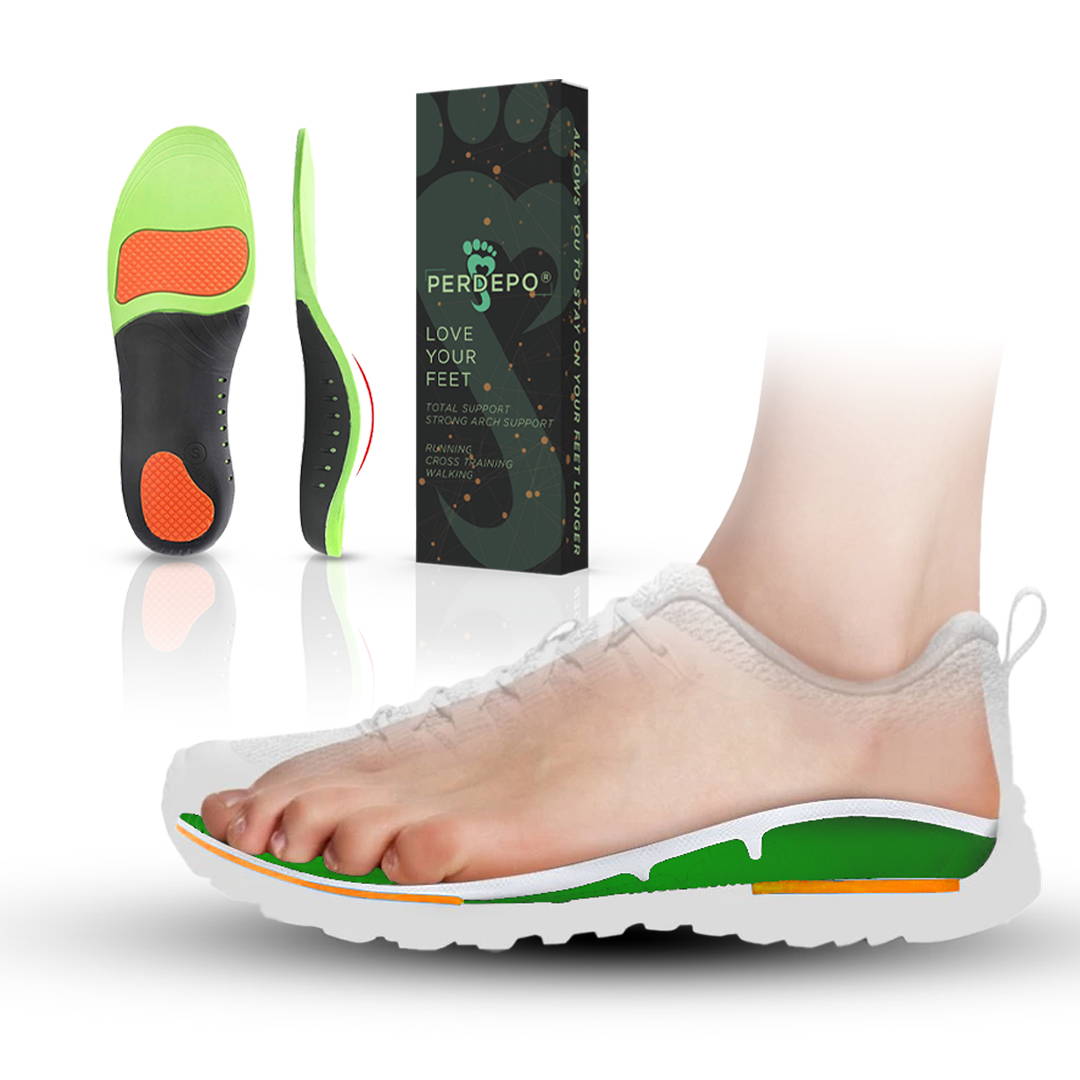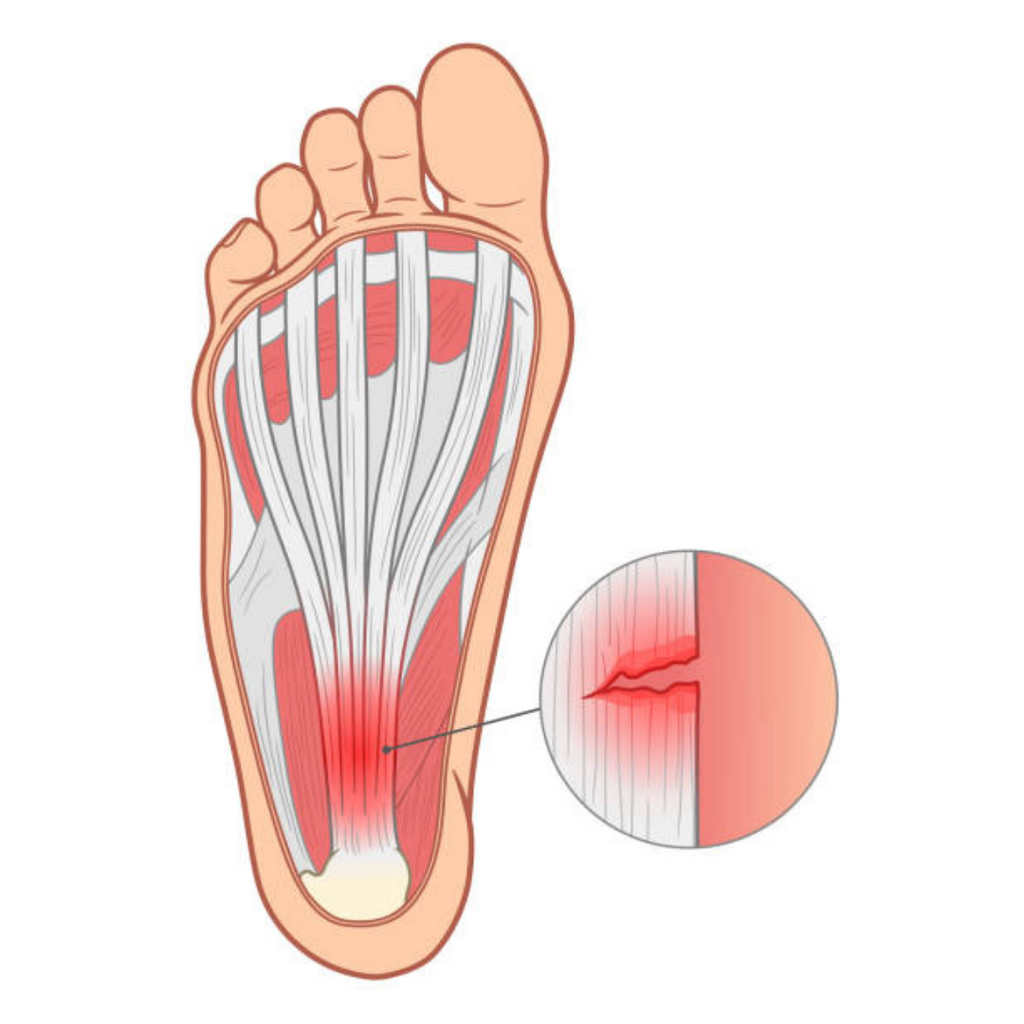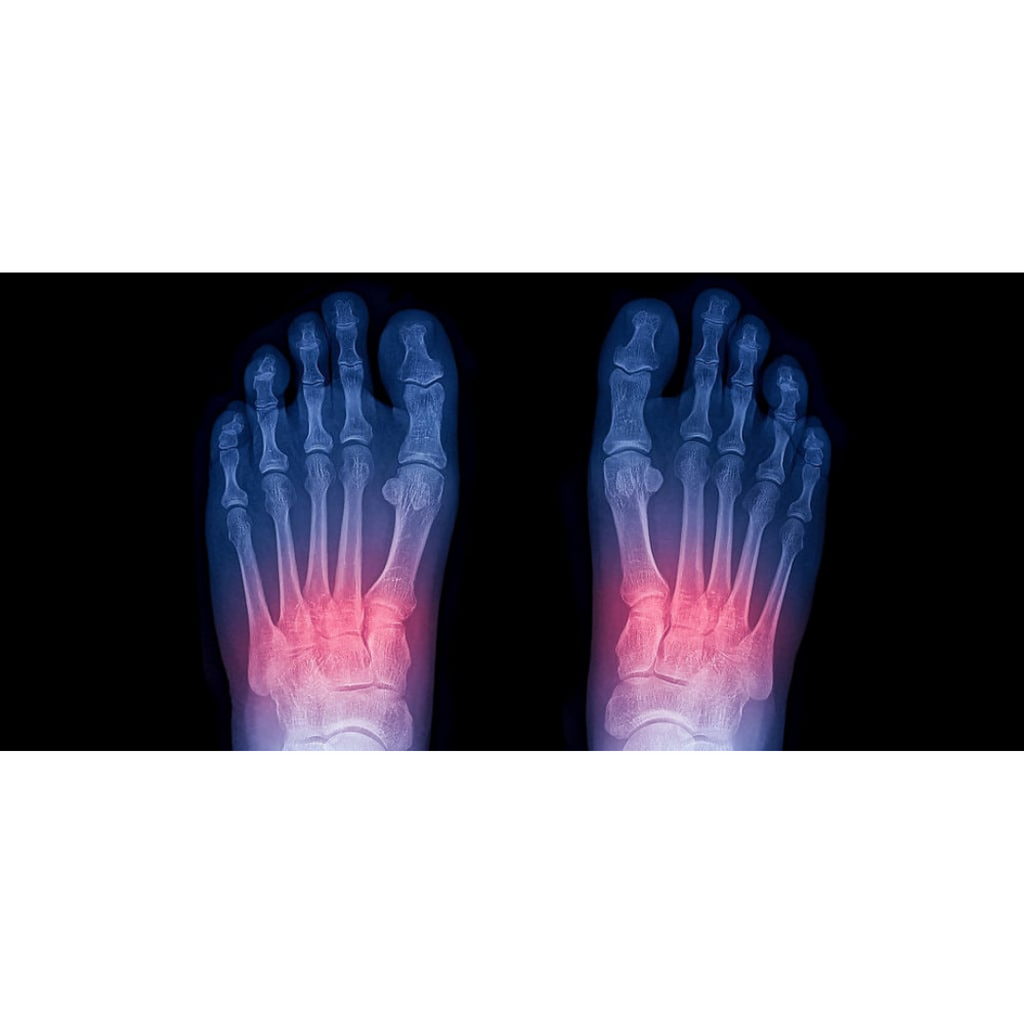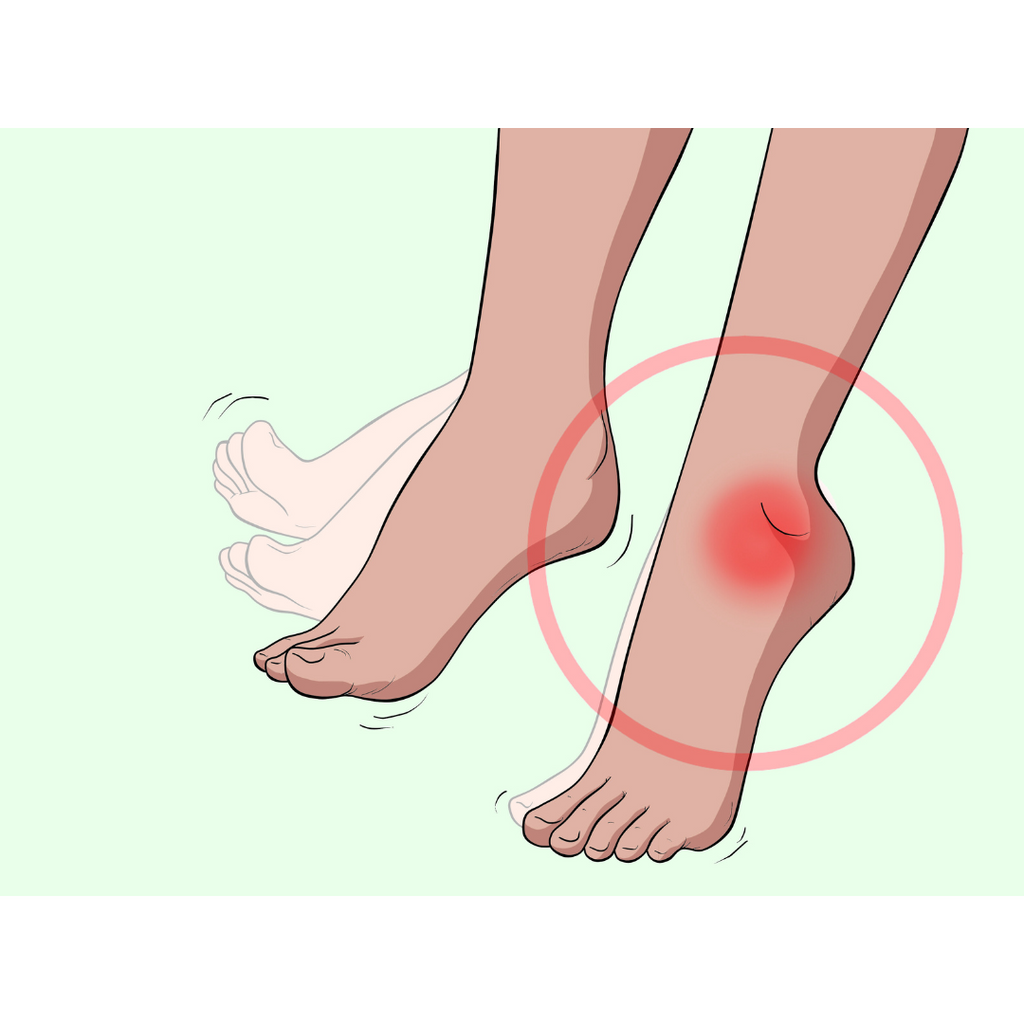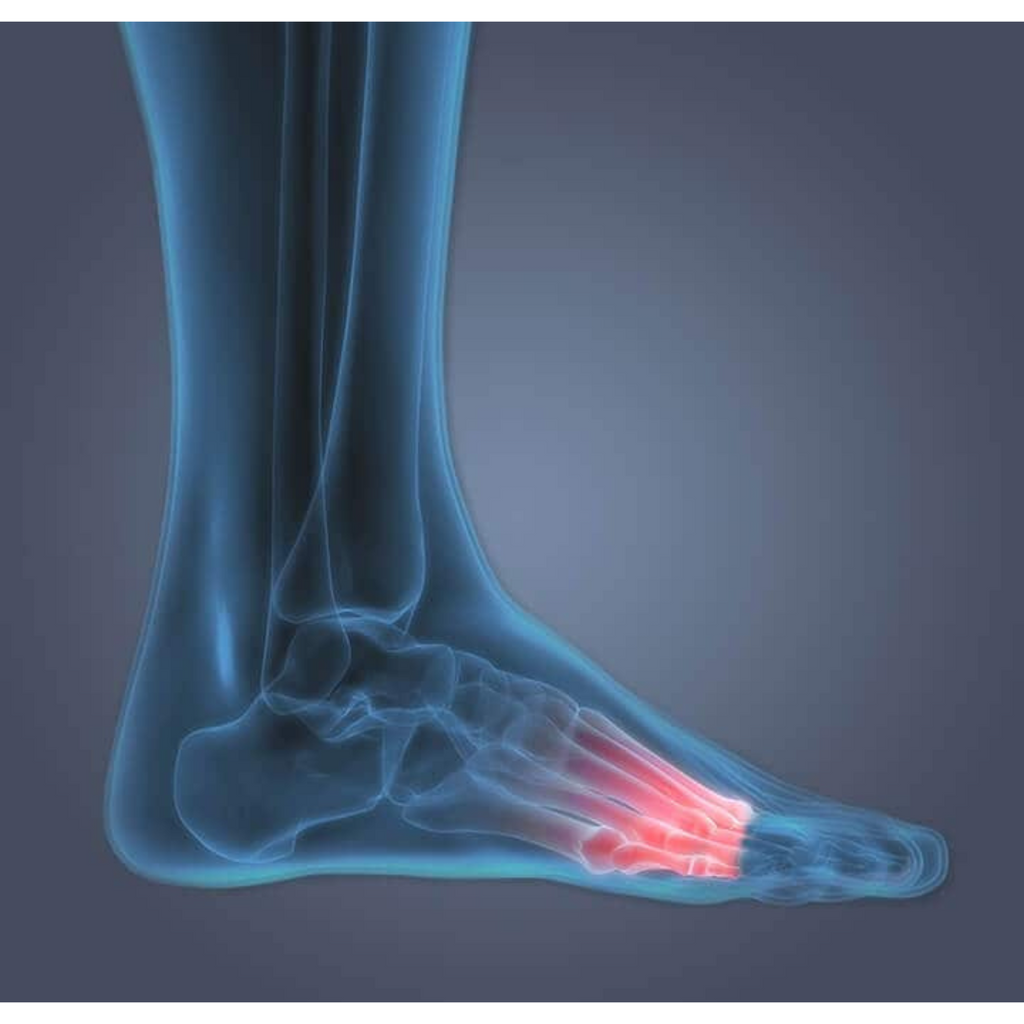The arch is made up of the foot's tarsal and metatarsal bones, which are held together by tendons and ligaments. The plantar fascia is a band of thick tissue that runs from the toes to the heel of the foot, connecting these bone structures. The plantar fascia is necessary for mechanical elements such as:
- allowing the foot to bear more weight without injury
- Supporting the foot's arch
- Shock absorption
- Working like a spring to lengthen one's stride
Arch pain and other types of foot pain are typically caused by an imbalance in the function or interaction of the foot's structures, whether caused by a foot arch injury, a neurological condition, or a hereditary structural abnormality. This frequently causes inflammation, which results in arch foot pain.
After covering the fundamentals, I'll go over some of the causes of arch of foot pain and what you can do about it.
Plantar Fasciitis Foot Pain: Arch and Heel
Plantar fasciitis is a condition that causes pain in the heel, but for some people, it can also cause pain in the arch of the foot. Plantar fasciitis occurs when the plantar fascia is overstressed, resulting in small tears. Repeated tearing and stretching of this tissue causes inflammation and thus pain in the foot arch over time.
This arch foot pain is usually most noticeable with the first steps out of bed or when moving after a period of inactivity. Climbing stairs or standing for an extended period of time is frequently associated with sharp pain in the arch of the foot or the heel caused by plantar fasciitis.
Obesity and pregnancy, wearing unsupportive shoes, jobs that require extended periods of standing on hard surfaces, and structural abnormalities of the foot are all potential causes of plantar fasciitis. Certain activities that place excessive strain on the plantar fascia, such as ballet or distance running, are also linked to arch pain in the foot.
Wearing a night splint to stretch the plantar fascia while sleeping and using a foot pain arch support to help distribute pressure more evenly across the foot are common treatments for plantar fasciitis. In addition to avoiding or reducing the irritating activity, one can also engage in foot massages and stretches. Icing the foot can also help reduce inflammation and provide relief from foot arch pain.
High Arches Foot Pain
Foot pain in the arch can also be caused by an abnormally high foot arch, as mentioned in the previous section. High arches are caused in approximately 50% of cases by a hereditary neuromuscular condition known as Charcot Marie Tooth (CMT) disease.
Aside from that, high arch foot pain is poorly understood; it is thought to be caused by a variety of neurological, orthopedic, or neuromuscular conditions, ranging from a post-trauma bone malformation to an Achilles tendon shortening to muscle weakness.
High arches cause difficulty fitting into shoes and arch pain while walking, running, or standing. If left untreated, this can lead to chronic pain and permanent difficulty walking or running.
Pain in the arch of the foot caused by high arches is typically treated with orthotics, such as corrective shoes, arch inserts, or supportive insoles, to help more evenly distribute force across the foot and reduce strain on the plantar fascia. Stretching and strengthening exercises for the foot muscles can also help with foot arch pain treatment. Surgery is typically reserved for cases of severe pain in the foot arch that does not respond to more conservative treatment options.
Foot Pain: Fallen Arches & Flat Feet
The inverse of high arches, a fallen arch or flat foot, can also be causes of foot arch pain. Whereas flat feet are typically structural issues that occur at birth, a fallen arch is an acquired condition caused by a change in the posterior tendon, which is responsible for supporting the arch of the foot and providing stability while walking. As a result, fallen arches are more scientifically referred to as posterior tibial tendon dysfunction. This tendon originates in the calf and extends along the inside of the leg to connect to the bones on the inside of the foot.
For some, pain in the foot arch caused by posterior tibial tendon dysfunction develops gradually over time as a result of daily wear and tear. Overuse of the feet, participation in high-impact sports, or wearing shoes with inadequate support can all hasten this process. Foot arch injuries, such as a fall or other such trauma, can also result in a fallen arch.
Certain activities, such as obesity, diabetes, steroid injections, or high blood pressure, also increase the risk of this type of foot pain in the arch. Women and people over the age of 40 are more likely to have fallen arches.
Pain under the arch of the foot that worsens with activity or when walking on uneven ground are symptoms of fallen arches, as is swelling of the inner part of the ankle. As a result, people with fallen arches frequently have difficulty walking or standing for extended periods of time.
If nothing is done to treat the injury, the tendon will degenerate and pain will radiate to the outside of the ankle as the heel bone shifts outward. Because of the resulting poor leg alignment, this condition can also cause knee or back pain.
If caught early, this injury can usually be treated non-invasively by reducing or discontinuing the problematic activity or switching to a sport with less impact, icing the foot, taking non-steroid anti-inflammatory drugs (NSAIDs), losing weight (if applicable), and wearing a short cast, walking boot, or some other orthotic that controls foot position to stabilize the tendon.
Tarsal Tunnel Syndrome Foot Pain: Arch
The posterior tibial nerve can also be pinched or entrapped as it travels through the flexor retinaculum, a supportive band that runs along the inside of the ankle, resulting in tarsal tunnel syndrome (AKA, posterior tibial neuralgia). This could happen as a result of an ankle injury or if one's ankle rolls inwards when walking or running. Tarsal tunnel syndrome can also be caused by things that put pressure on the tarsal tunnel, such as the formation of a cyst or inflammation of the tibial tendon.
This type of injury typically causes ankle pain, but it can also affect the arch or the entire foot. A pinched nerve can also cause foot or ankle arch weakness, numbness, tingling, or burning pain. This pain, tingling, numbness, or burning sensation can also radiate up the leg to the knee and usually worsens with activity.
Tarsal tunnel syndrome is typically treated with RICE (rest, ice, compression, and elevation), strengthening physical therapy, wearing orthotics such as a walker boot, anti-inflammatory medications, and, in some cases, corticosteroid and anesthetic injections. If these do not work, tarsal tunnel release surgery may be required.
Psoriatic Arthritis Pain: Arch of Foot
Psoriatic arthritis is a type of chronic inflammatory arthritis. It happens when the body's immune system attacks healthy cells and tissue, causing joint inflammation and excessive skin cell production. This causes the fingers or toes to swell up like sausages and can cause pain or stiffness where the body's ligaments or tendons attach to the bones of the foot (as well as other areas of the body), such as the ball of the foot. Psoriatic arthritis is also linked to nail changes and fatigue.
However, it is unclear what causes this atypical immune system response, which is thought to be caused by both genetic and environmental factors. It is frequently associated with a family history of the condition or having psoriasis, and it typically affects people aged 30 to 50. Psoriatic arthritis can be triggered by trauma or infection in people who have an inherited predisposition to it.
There is currently no cure for psoriatic arthritis. As a result, in mild cases, treatment for this type of arthritis focuses on reducing and controlling inflammation with NSAIDS. Some doctors may advise corticosteroid injections into the joint, or surgery if the condition has progressed to major joint destruction. Conservative self-help techniques include using ice or heat packs and maintaining a healthy weight and level of physical activity.
Plantar Fibromatosis Pain: Foot Arch
Plantar fibromatosis is a rare condition that causes the plantar fascia to thicken and non-cancerous nodules or cords to form on the tissue. These nodules, known as fibromas, are usually slow-growing, but they can eventually cause pain under the foot arch when they rub against the floor and make it difficult to reach the toes. Another symptom of plantar fibromatosis is a visible lump that is firm to the touch. This condition usually manifests itself on the medial (inner) side of the foot, near the highest point of the arch.
The cause of this condition is unknown, but some generalizations can be made. It is more prevalent in Caucasian males, particularly those over the age of 70. This condition is frequently passed down through families. Overuse of the feet over time, as well as trauma to this area of the foot, have all been linked to the development of plantar fibromatosis. Other conditions considered to be risk factors for the disease include:
- Diabetes mellitus
- Epilepsy (seizure medicine)
- Palmar fibromatosis
- Peyronie’s disease
- Thyroid problems
- Liver disease
- Alcoholism
When the nodules are small and painless, shoe inserts, night splints, heel cushions, or arch supports are usually used to relieve pressure on the fibroma. In more severe cases, a cortisone injection or surgery may be required.




